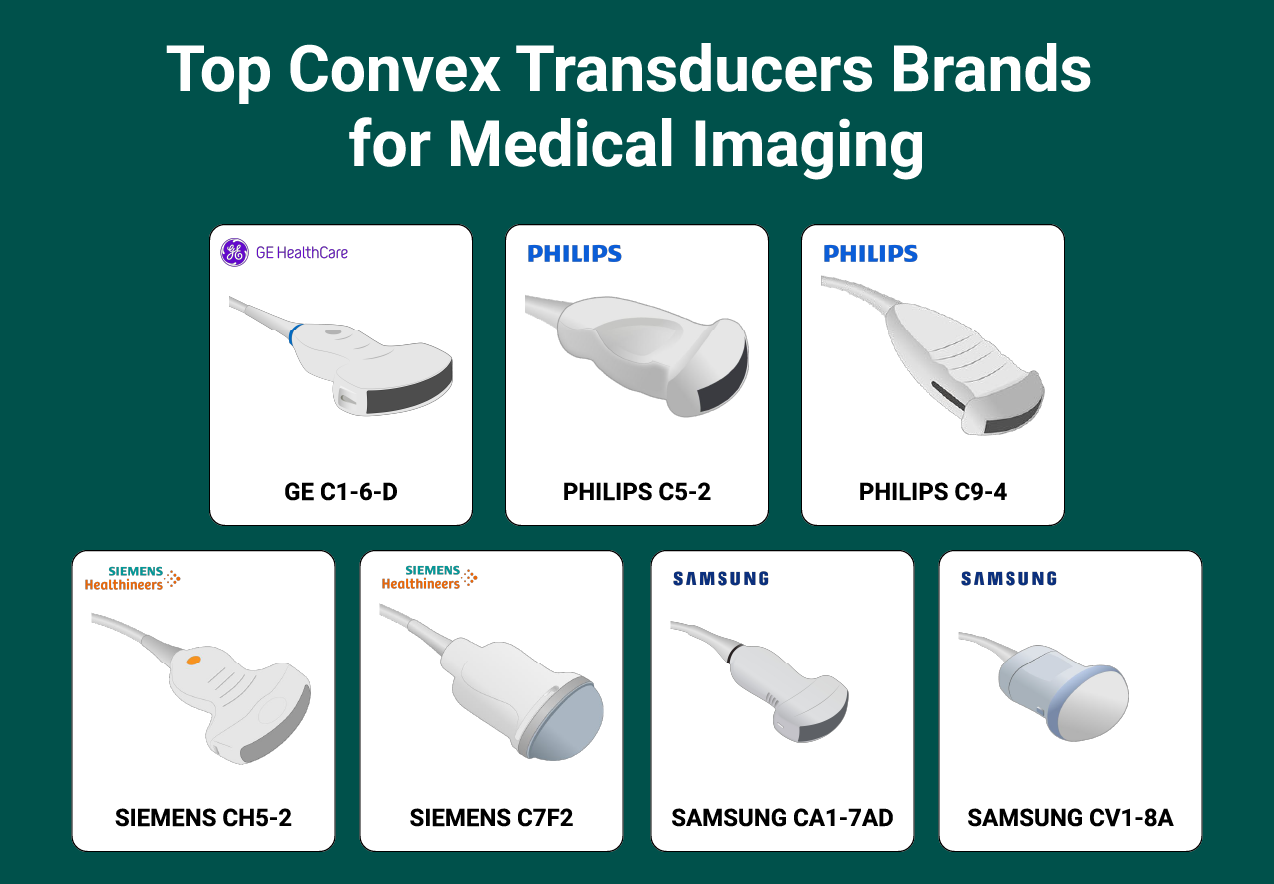What is a Convex Transducer?
Ultrasound technology is a vital tool in modern medicine, and different types of transducers or probes are made to meet different diagnostic needs. One of the most commonly used is the convex transducer, also called the curved or curvilinear transducer.
But what exactly makes convex transducers unique, and how do they assist healthcare professionals in visualizing internal structures with precision? Keep reading to explore the key features of convex ultrasound transducers and their important role in medical imaging.
An Introduction to Convex Ultrasound Transducers
Ultrasound transducers come in various types, each designed for specific diagnostic purposes. One commonly used type is the convex ultrasound transducer, also referred to as a curved or curvilinear probe due to its curvilinear shape.
Compared to other transducers, such as linear probes, convex probes operate at a lower frequency, between 2 and 7.5 MHz. This lower frequency enables them to penetrate deeper into the body, capturing more detailed images of structures that lie farther beneath the surface.
How Does a Convex Ultrasound Transducer Work?
As discussed earlier, convex ultrasound transducers can penetrate deeper body’s tissue, such as the abdominal parts. To do this, the convex probe is placed on various parts, like the abdominal organs. When it’s applied to the skin, the ultrasound converts electrical energy into mechanical sound waves, which travel through the body, bouncing back when they encounter different structures. Then, the transducer captures the returning echoes, processes the information, and creates a picture of the internal structures, helping with accurate diagnosis and imaging of different parts of the body.
What Are the Benefits of Convex Ultrasound Transducers?
Generally, all types of ultrasound transducers, or probes, help penetrate different body tissues to capture detailed images. However, each type of ultrasound probe comes with its unique advantages, and convex probes are no exception.
Convex probes, with their wider, curved footprint, are particularly useful for providing a broader field of view, making them ideal for deep imaging applications such as abdominal scans and organ diagnostics. Their design allows for better visualization of larger internal structures, making them indispensable in various medical fields like obstetrics, gynecology, and musculoskeletal assessments.
Convex Transducers Applications?

Convex transducers are versatile tools used in various medical imaging applications due to their ability to penetrate deeper tissues while providing a broad field of view. Below are some of the key areas where convex ultrasound transducers are widely applied:
1- Abdominal Imaging
Convex ultrasound transducers are widely used for abdominal imaging, providing a broad field of view for visualizing organs such as the liver, kidneys, and spleen. They can be used to diagnose abnormalities like liver disease, kidney stones, and abdominal masses.
2- Vascular Imaging
Another key application of Convex probes is vascular imaging, which assesses blood flow and detects blockages or abnormalities in major blood vessels.
3- Nerve Imaging
Convex probes are used in nerve imaging to visualize peripheral nerves and guide nerve blocks or injections. This helps in pain management and during surgical procedures involving the nervous system.
4- Musculoskeletal
Convex transducers aid in identifying conditions such as tendonitis or arthritis in muscles, tendons, ligaments, and joints, which can result from injuries like tears, sprains, or inflammation.
5- OB/GYN
In obstetrics and gynecology, convex transducers play a crucial role in monitoring fetal development, visualizing the uterus and ovaries, and identifying pregnancy-related complications. They are commonly used for routine prenatal exams and diagnosing reproductive health issues.
Top Convex Transducer Brands for Medical Imaging
Here are some of the most well-known and top brands of convex transducers used in medical imaging:
- GE: Some popular convex transducers of the GE brand are GE C1-6-D, GE C3-9-D
- Philips: Some popular convex transducers of the Philips brand are Philips C5-2, Philips C9-4
- Siemens: Some popular convex transducers of the Siemens brand are Siemens CH5-2, Siemens C7F2
- Samsung: Some popular convex transducers of the Samsung brand are Samsung CA1-7AD, Samsung CV1-8A
- Canon: Some popular convex transducers of the Canon brand are PVT-375BT, PVT-382BT, and PVT-674BT
- Hitachi: Some popular convex transducers of the Hitachi brand are Hitachi C251, Hitachi C252

The Bottom Line
Convex ultrasound transducers, characterized by their curved design and lower frequency, are crucial tools in medical imaging due to their ability to penetrate deeper into tissues and provide a broad field of view. These probes are particularly useful for abdominal, vascular, musculoskeletal, and OB/GYN applications, making them indispensable for diagnosing a wide range of conditions. Top brands such as GE, Philips, Siemens, Samsung, Canon, and Hitachi offer a variety of high-quality convex transducers that enhance diagnostic accuracy in healthcare.



